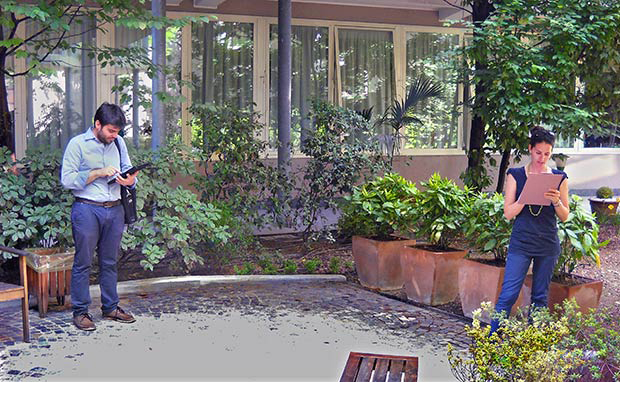Italians embrace Rodiek’s survey for evaluating outdoor spaces

Susan Rodiek
Graduate students in Italy, using a survey developed at Texas A&M’s [Center for Health Systems & Design] (http://chsd.arch.tamu.edu) , have found that many outdoor spaces in Milan nursing homes could benefit from improvements that help residents access and experience nature’s healing properties.
Rodiek presented the survey at the June 2012 [Second Global Congress for Qualitative Health Research] (http://convegni.unicatt.it/meetings_2231.html?rdeLocaleAttr=en) in Milan. In attendance was Cristina Ferarra, a graduate landscape architecture student at the University of Genoa, who later joined graduate students at the University of Milan using Rodiek’s survey to evaluate 94 open spaces at 67 nursing homes in Milan. The students shared their findings with Italian nursing home administrators and government regulators.
“Many researchers have demonstrated that outdoor spaces are important health-promoting components of long-term care settings,” said Susan Rodiek, an associate professor of architecture, who developed the survey in 2007. “Benefits from spending time outdoors include improved mood, better sleeping patterns, hormone balance and increased Vitamin D absorption.”
Evaluators use Rodiek’s survey to rate numerous aspects of a facility’s outdoor spaces, including whether the space has a diverse mix of trees, vines, flowers and shrubs, if seating has back and arm rests to help residents sit down and get up safely, if walkways are partly shaded from hot midafternoon sunlight, whether residents in walkers and wheelchairs can easily cross door thresholds to the space and more.
The tallied ratings result in conclusions corresponding to the space’s score, such as “this outdoor area is successfully meeting most of residents’ needs,” to “about average, but could benefit from further improvement,” or “needs substantial improvement.”
During the fall 2012 semester, Ferarra visited Texas A&M to help Rodiek and other Texas A&M students field test a simplified revision of the survey which she used in Italy the following spring.
While developing the survey in 2007, Rodiek learned while most facilities provide outdoor spaces for residents' use, many were lightly used for a variety of reasons including doors that were too heavy to open, doors that closed too quickly, uneven surfaces, or doorway thresholds creating barriers for wheelchairs or walkers.
The research informed the Rodeik’s award winning DVD training series, “ [Access to Nature, Planning Outdoor Spaces for Aging] (http://archcomm.arch.tamu.edu/archive/news/spring2010/stories/RodiekASLAaward.html) ,” which won a 2010 American Society of Landscape Architecture Professional Award, as well as an Environment and Design Award from the Center for Excellence in Assisted Living.
“We found so many barriers in our research,” said Rodiek. “For an older person, that’s the difference between going outside or not.”
Tags
- architecture
- chsd gallery
- global college
- graduate work
- health systems & design
- interdisciplinary
- landscape architecture & urban planning
- lectures
- research
- rss
- undergraduate work
- wellness
Related Posts

Treatment center designs aid PTSD, head-injured vets

Oct. 29 symposium spotlights college, faculty research

Oct. 23 symposium spotlighted college, faculty research
Students to unveil outpatient, sports facility designs
Follow Us
Facebook Twitter Vimeo Youtube Flickr RSS
Recent Posts

Planning prof heads study of disaster housing aid

A message from the dean

Former student remembered as expert planner

Leading educator named new head of Architecture Dept.






_thumbnail_small.png)
